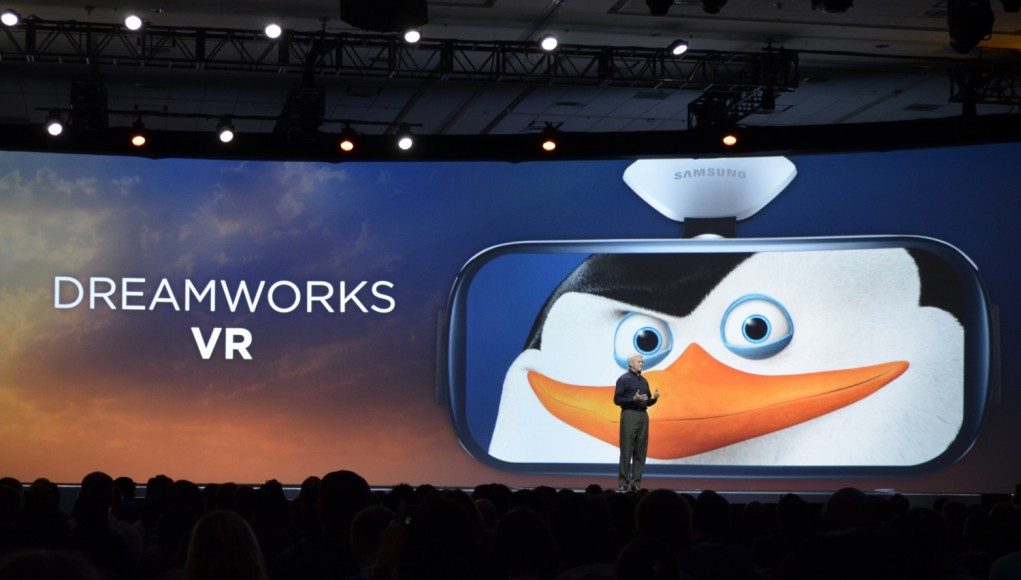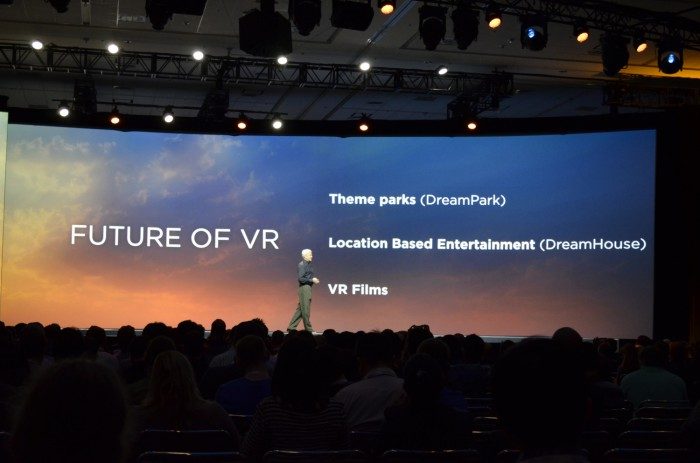DreamWorks Animation VR Out of Home
While DreamWorks is experimenting with both real-time and pre-rendered experiences for home consumption, they’re also looking to the world of what’s known as ‘out-of-home’ entertainment; experiences found on-site at places other than the consumer’s residence.
For instance, Mayoss says that, much like Disney, DreamWorks is working to bring VR experiences to the company’s forthcoming theme park which will be called—you guessed it—DreamPark. Details here were light, but it’s likely to take the form of an attraction which stimulates more than just the visual and audible senses; motion will likely be a major component. This may even necessitate a proprietary HMD, for reasons outlined in a great guest article by Kevin Williams.
Beyond the theme park, DreamWorks is working on more portable (and probably promotional/marketing type) experiences which was referred to as ‘DreamHouse’. Mayoss teased at SDC that the company was working on a “retail experience” that will launch this holiday season in eight malls across the United States. There’s no word on exactly what this will entail, but my money is on a promotional experience for the soon to be released Penguins of Madagascar.
It’s great to see big studios validating the power of VR by jumping in with projects of their own. Will early wins in virtual reality provide DreamWorks Animation with a unique differentiator over rival Pixar? Only time will tell, but I can’t imagine Pixar is going to sit this one out for too long.








